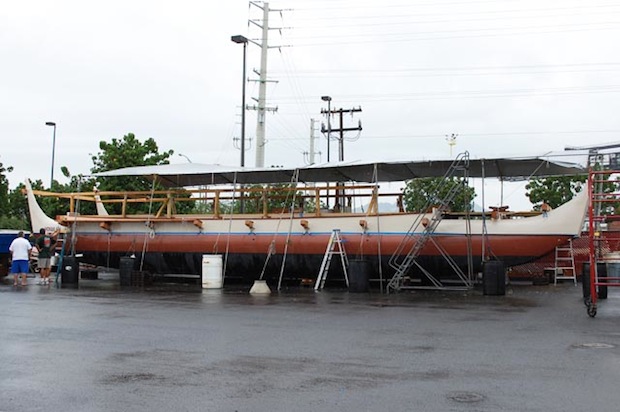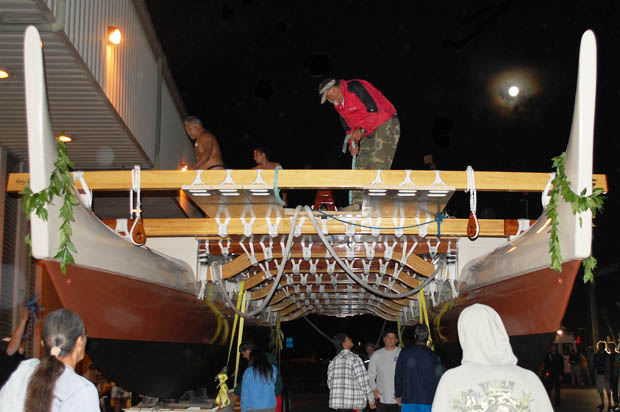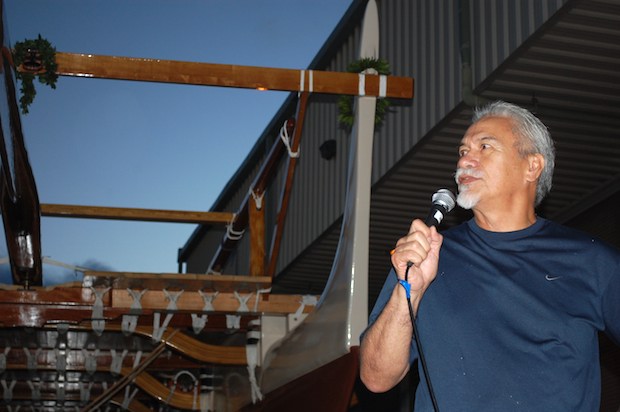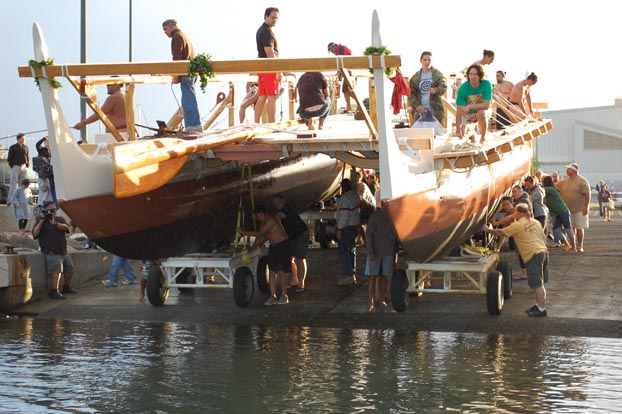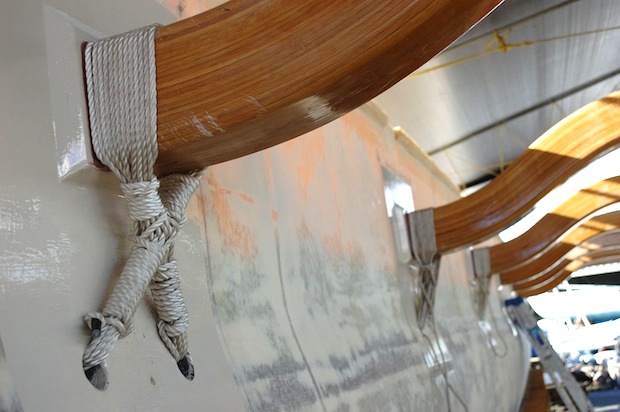Mālama Wa‘a 2010-2012
Rebirth: Hōkūle‘a for the Next Generation
Based on an earlier article by Mike Taylor, a Hōkūle‘a Captain-in-training for the Worldwide Voyage and a lead volunteer in the dry dock effort.
On March 8, 2012, Hōkūle‘a was reborn. For the first time since she was launched thirty-seven years earlier, on March 8, 1975, at Hakiupu‘u-Kualoa, Hōkūle‘a was taken apart completely—no two pieces remain attached to each other.
Under the leadership of navigator Bruce Blankenfeld and the technical guidance of Bob Perkins, head of Honolulu Community College’s Marine Education and Training Center (click here for a Google Map), the canoe was opened down to her hulls and rebuilt.
Since her last major overhaul in 2002-3, the wa‘a had sailed tens of thousands of miles, including a voyage to Papahānaumokuākea (Northerwestern Hawaiian Islands) in 2003-2004 and a voyage to Satawal in Micronesia and on to Japan in 2007. When Hōkūle‘a was hauled from the water in September 2010, she had sailed 140,000 miles since she was launched in 1975—the equivalent to 6½ times around the earth.
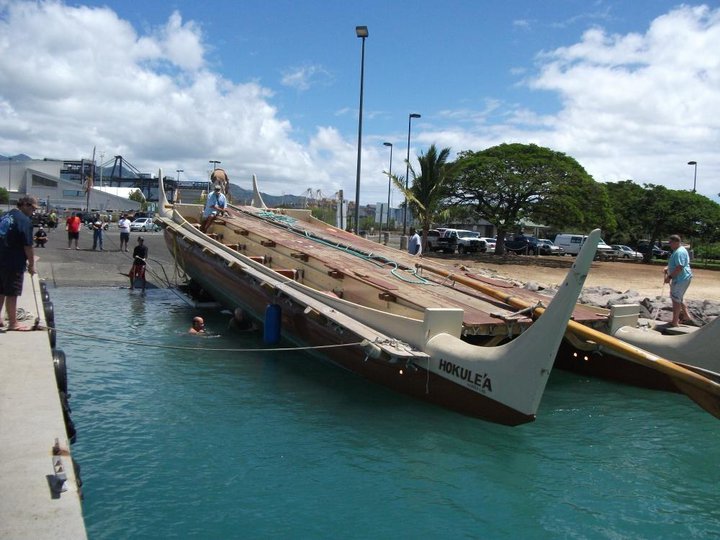
Hōkūle‘a came out of the ocean and into drydock in September 2010 at the Marine Education and Training Center (METC) on Sand Island, Honolulu.
The renovation of the canoe was undertaken to prepare her for another generation of voyaging, beginning with a Statewide sail in 2012 and a Worldwide Voyage (WWV), targeted for launching in 2013
After 18 month Hōkūle‘a emerged from drydock stronger, lighter, more stable.
March 8: Re-Launching Hōkūle‘a
For a narrative of the re-launching, see Karen Holman’s Hōkūle‘a Reborn 2012.
Under the Full Moon, Kealoha Hoe and Attwood Makanani Prepping Hōkūle‘a for Launching
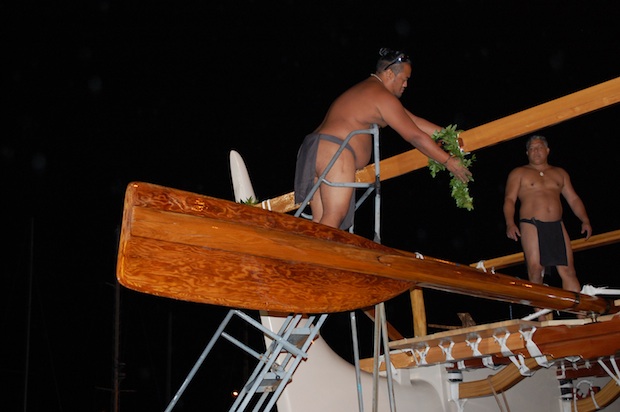
Kaina Holomalia Wrapping Maile on the Back Spreader
1976 Crew Member Billy Richards, Representing ‘Ohana Wa‘a, the Family of the Canoe, the statewide canoe building and voyaging organization.
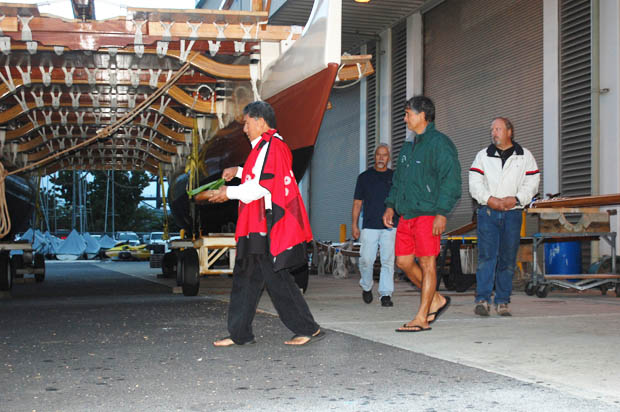
Kaniela Akaka, with Billy Richards, Bruce Blankenfled, and Bob Perkins, blessing Hōkūle‘a

Crew Pule (Prayer)
Into the Ocean, with the Sun Rising
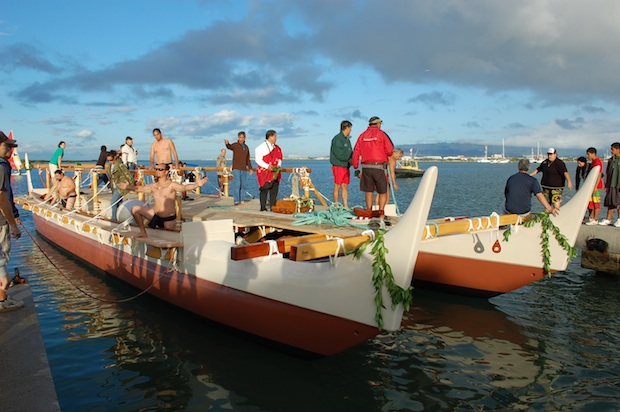
Afloat
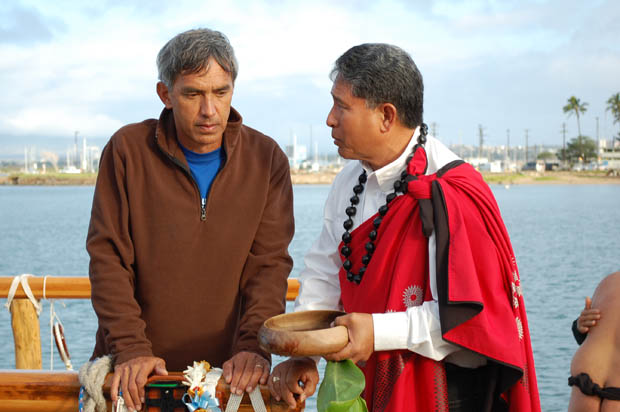
Nainoa and Kaniela after the Launching
Drydock Notes
We found significant rot caused by 35 years and 140,000 nautical miles of exposure to seawater. All rotted wood and compromised structural components have been replaced, most notably the bulkheads that provide great strength to the hulls and separate the individual, watertight cargo holds. Newly replaced ring frames between each set of bulkheads provide additional hull strength. The fiberglass on both hull bottoms has also been renewed.
More than 1,000 volunteers worked on drydock, a total of approximately 26,500 hours.
Approximately five miles of line was used to tie all of Hōkūle‘a’s pieces and parts back together – no nails.
Her deck is two feet wider, and her masts two feet taller.
Hōkūle‘a’s current length and width: 62 feet long by 20 feet wide
Timeline
Hōkūle‘a was hauled out for drydock at Honolulu Community College’s Marine Education and Training Center in September 2010.
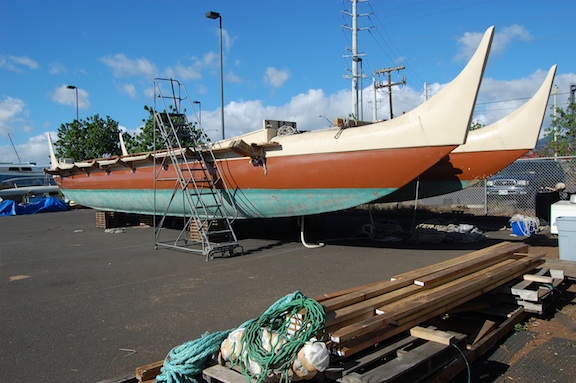
Hōkūle‘a on land, September 2010
January 2011
After the canoe was unlashed and stripped down, inspection and rebuilding began.
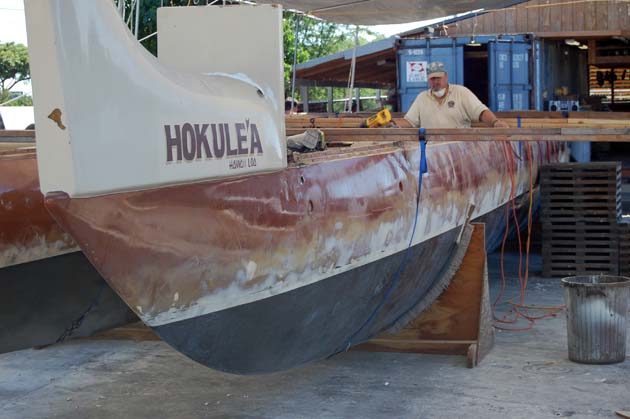
Bob Perkins working on the starboard hull
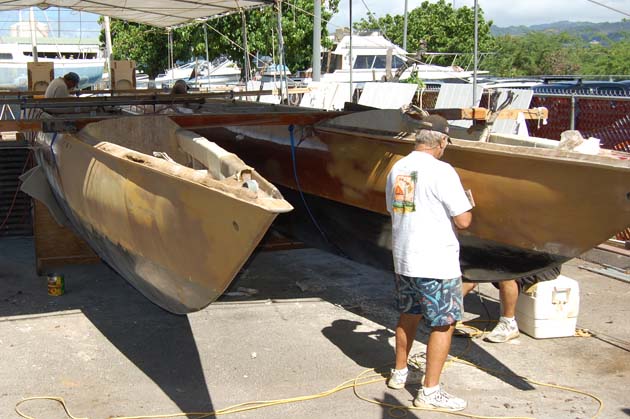
Hulls stripped down and undergoing repairs
Spring and Summer 2011: New Bulkheads and ‘Iako (Crossbeams)
New bulkheads for Hōkūle‘a were built. Bulkheads create watertight compartments inside the hulls and add strength.
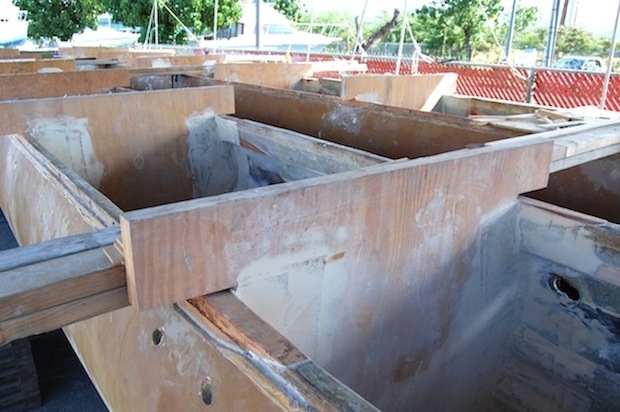
With new construction methods not available when she was built over 35 years ago (1973-1975), Hōkūle‘a will be lighter and stronger, for her upcoming World Wide Voyage.
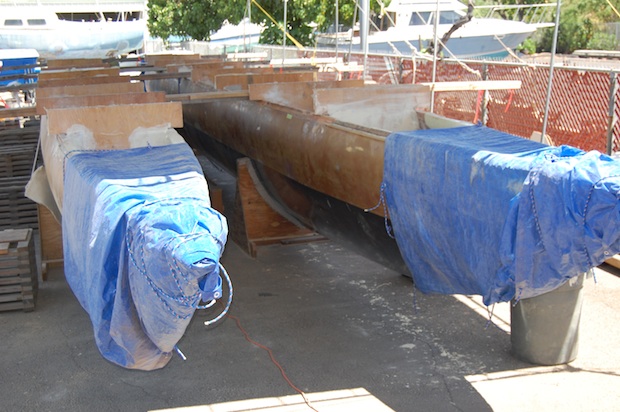
Eight new ‘iako arrived from Maine, where they were fabricated at John Williams Boat Co. Two feet longer than the old ‘iako, the new ‘iako allows for a two-foot wider deck.
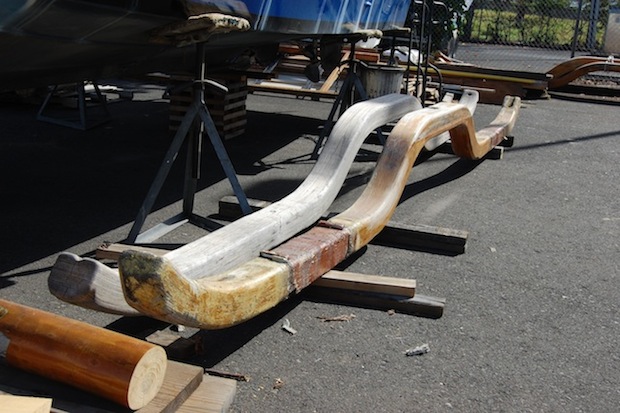
Old ‘Iako
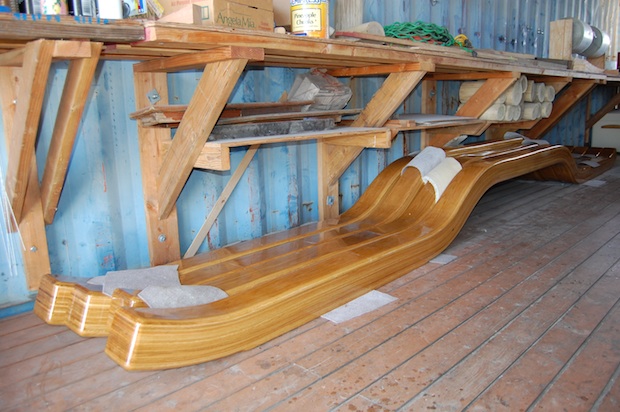
New ‘Iako
An article in Epoxyworks (Spring 2011) describes the process of constructing the ‘iako: "Building Iakos" by Joe Parker.
September 2011
New masts, spars, cleats and deadeyes (doughnuts) were fabricated and finished by PVS volunteers.
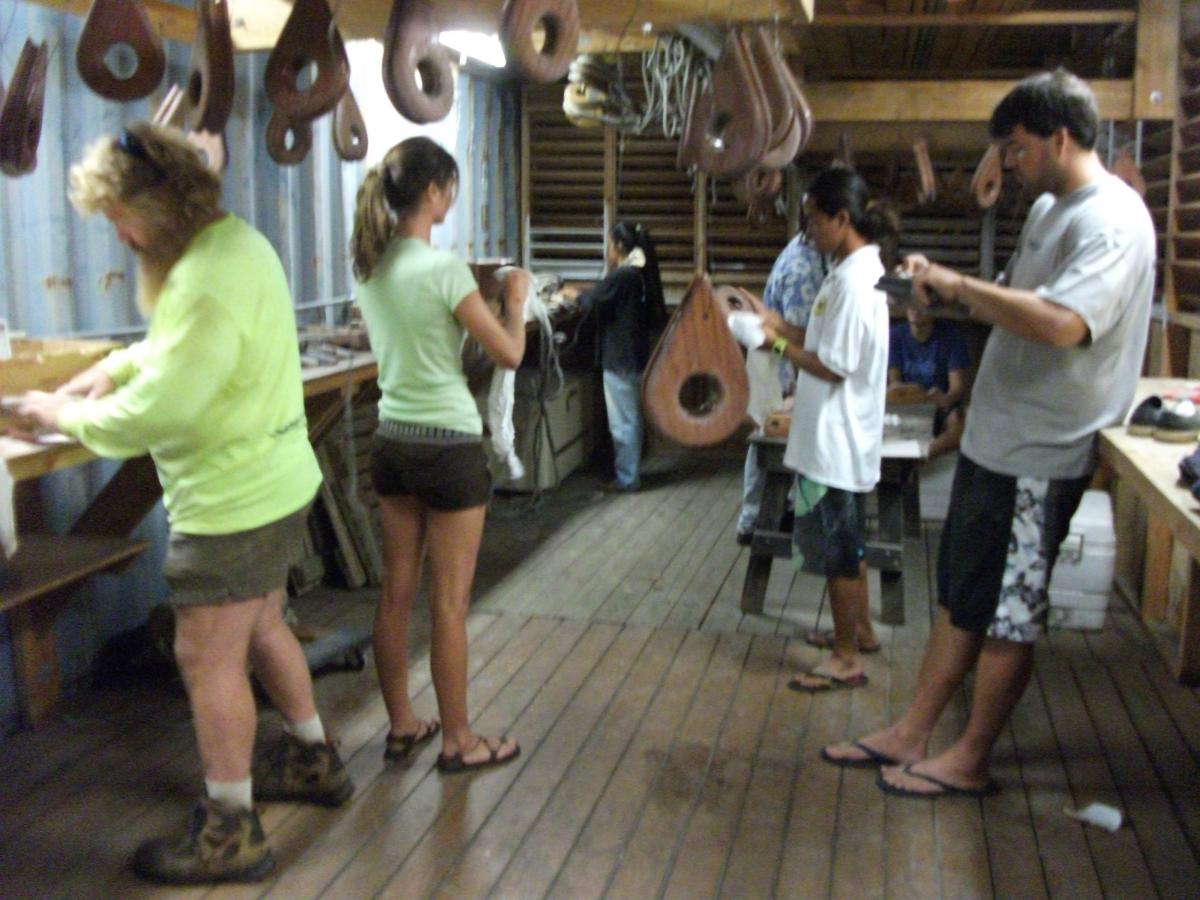
Sanding canoe parts. Hundreds of volunteers come to help restore the canoe.
The process of lashing the canoe back together began.
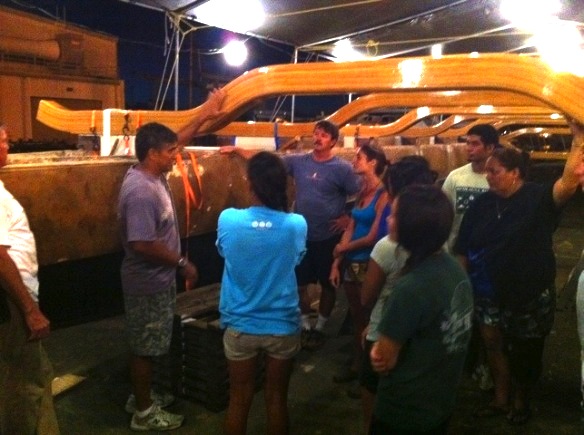
Bruce talking with the volunteers before the lashing begins
October 2011
In October, over 800 work hours were donated by volunteers. (Volunteer workdays now included Monday-Friday afternoons, and all day Saturday.)

Hōkūle‘a, October 31, 2011
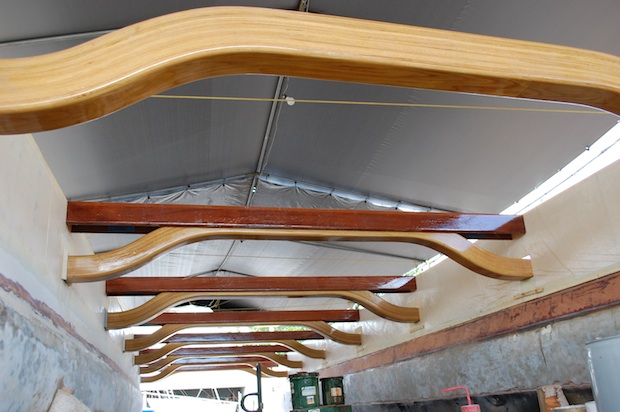
New ‘Iako (Crossbeams)
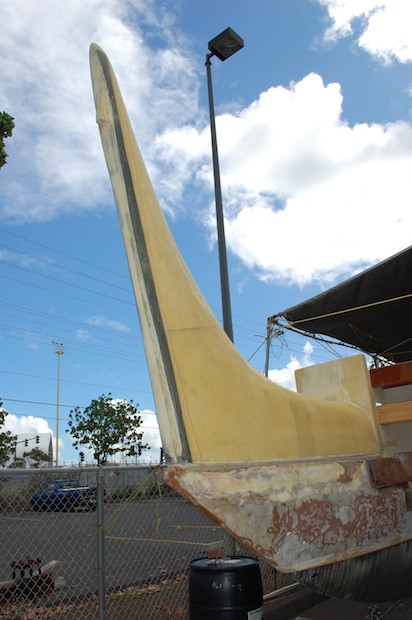
New Back Manu Fitted on the Port Hull
November 2011
Work on restoring Hōkūle‘a continues at a steady pace.
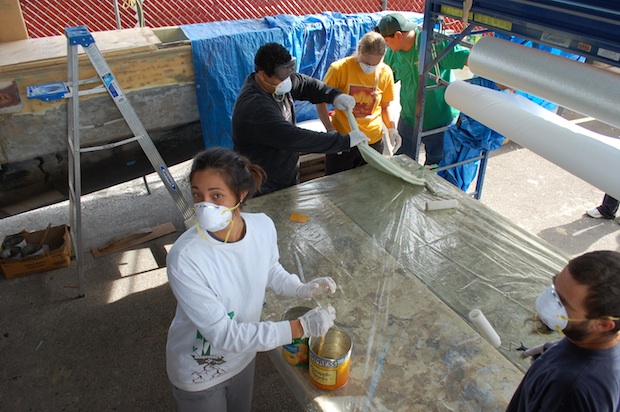
Volunteers preparing fiberglass
The mo‘o, or gunwales (the side boards above the hulls), were replaced and fiberglassed. The new mo‘o are higher than the old ones, creating more freeboard to block ocean waves from splashing into the hulls.
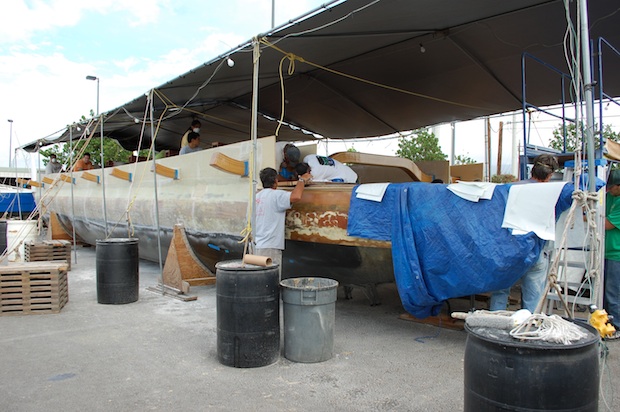
Hōkūle‘a, with new mo‘o
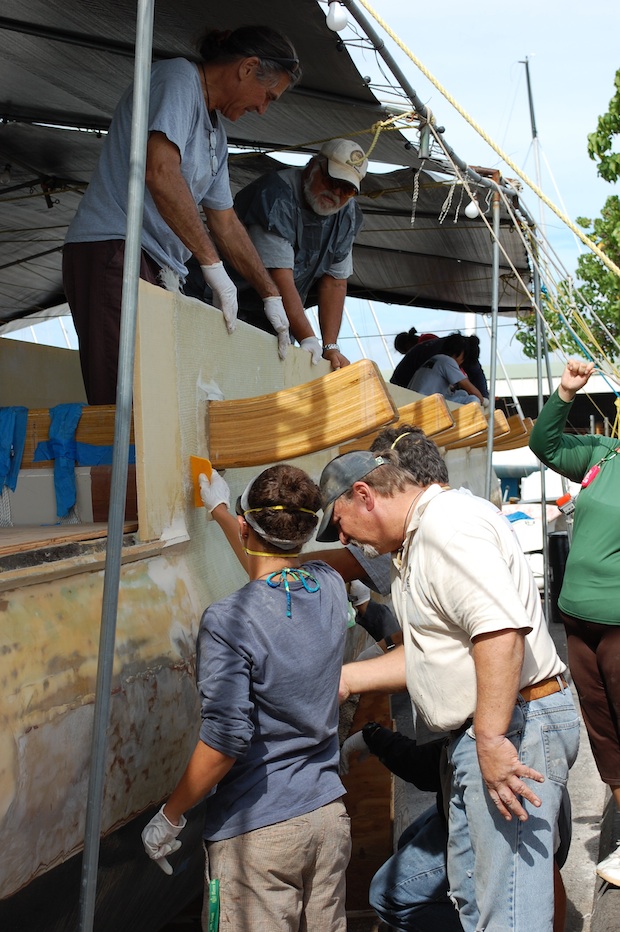
Laying fiberglass over the mo‘o on the port hull.
New back manu (the soaring end pieces that give Hōkūle‘a her distinctive profile) were affixed to the stern:

The mold for the front manu was finished. From this mold, two new front manu were produced and affixed at the bow:
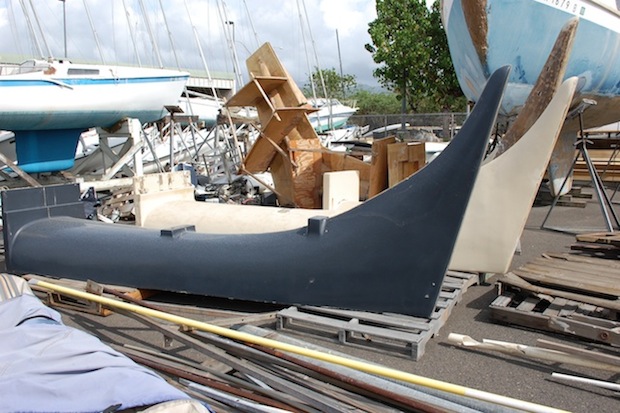
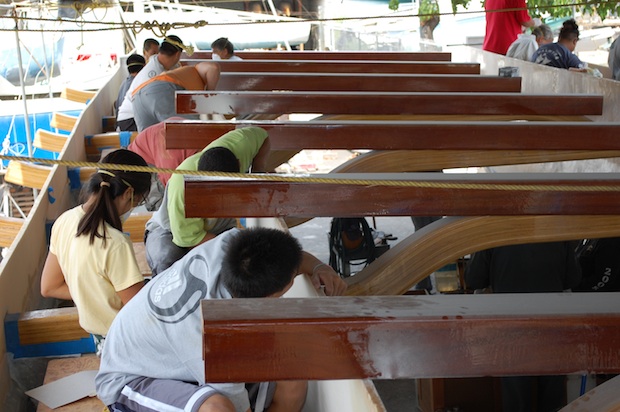
PVS Volunteers sanding the mo‘o inside the two hulls.
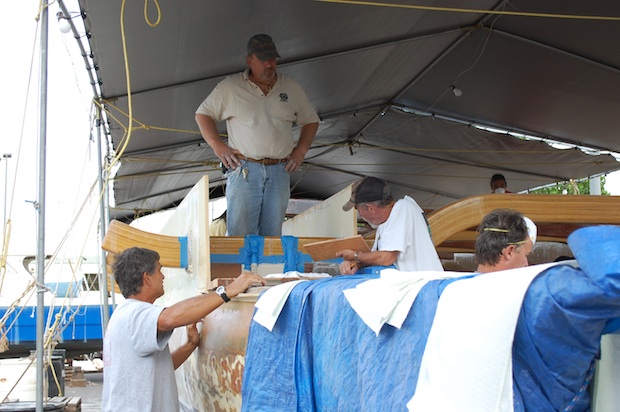
Bruce Blankefeld, Bob Perkins, and Mike Taylor conferring at the starboard bow on the next steps in restoring Hōkūle‘a.
January 2012
In the New Year, the work toward Hōkūle‘a’s rebirth continued, in preparation for the Worldwide Voyage ...
The front manu (the end piece curving upward) atop the starboard hull:

A new steering sweep positioned at the back of the port hull:
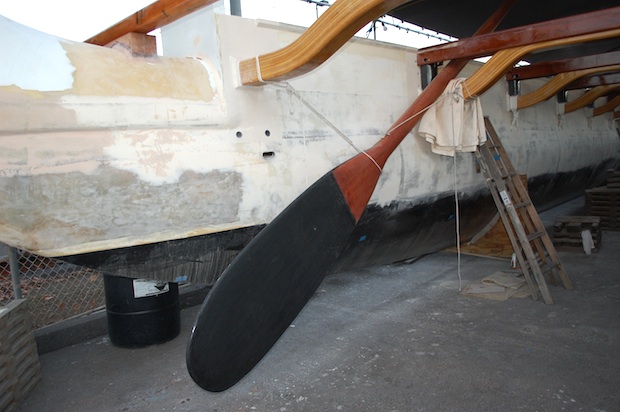
Volunteers lashed down the ‘iako (crossbeam) at the bow of the port hull, under the guidance of Mark Kimura (bottom left), of Honolulu Community College’s Marine Education and Training Center:
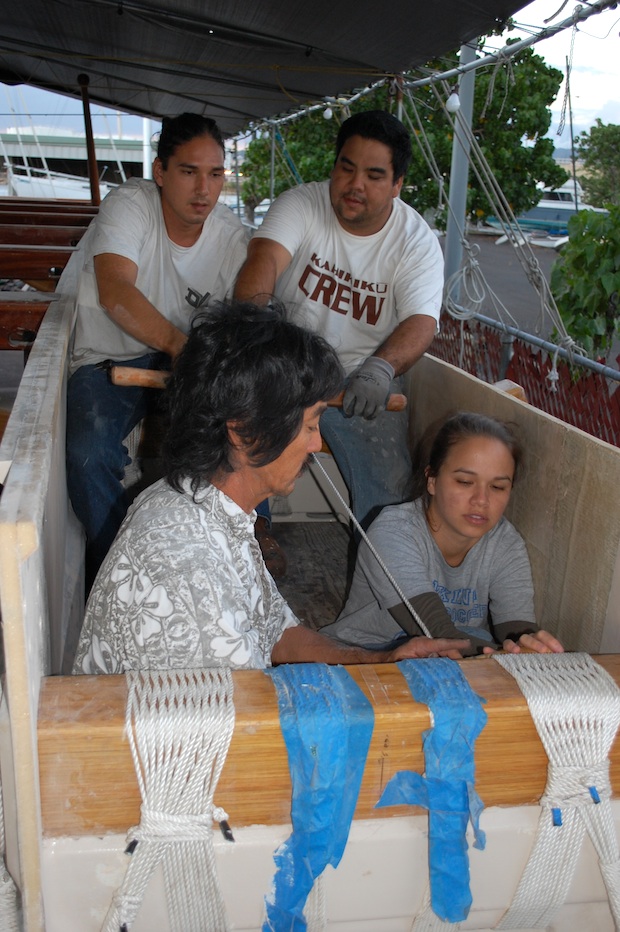
The crew lashing down a ‘iako (crossbeam) at the aft of the starboard hull:
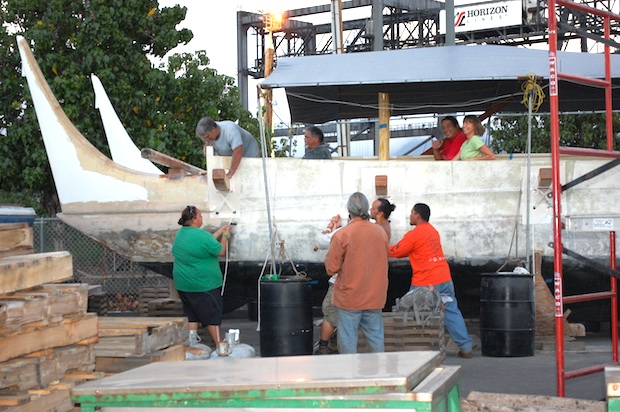
The art of lashing: intricate line work tying together the parts of the canoe:
Early February 2012
Both forward manu (end pieces curving upward) were attached to the hulls:
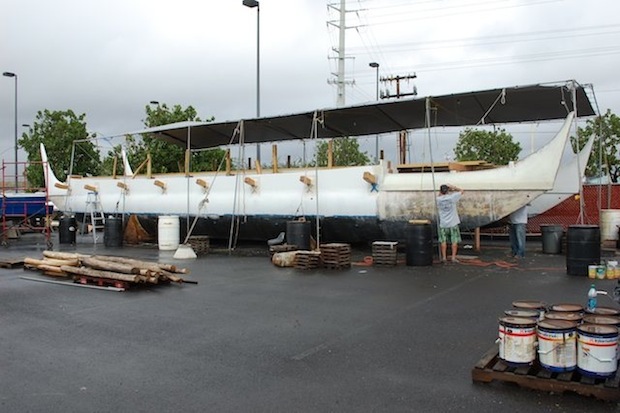
Sanding the hulls, by machine and hand:
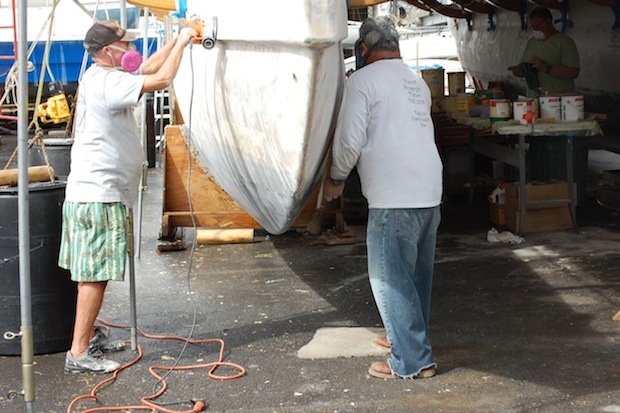
Decking postitioned to be lashed down:
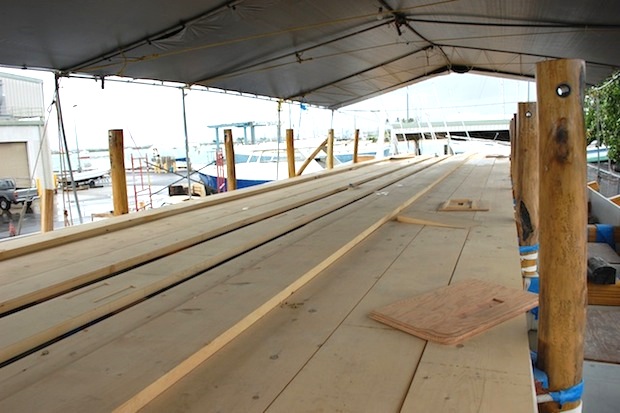
Posts positioned for railings and lashing:
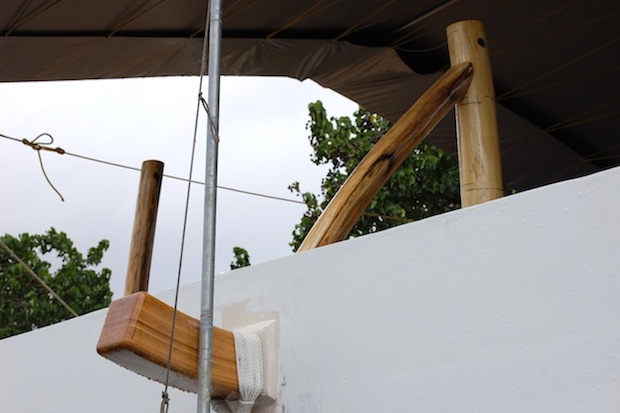
Late February 2012
The frontpieces are painted; the relaunching was scheduled for early March.
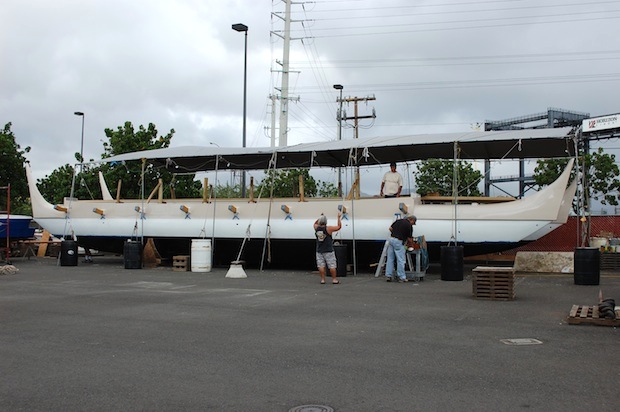
Neighbor island crews come in to speed up the lashinng. The new decking between the two hulls was lashed down to the ‘iako (crossbeams joining the hulls).

Looking forward, down the starboard hull:
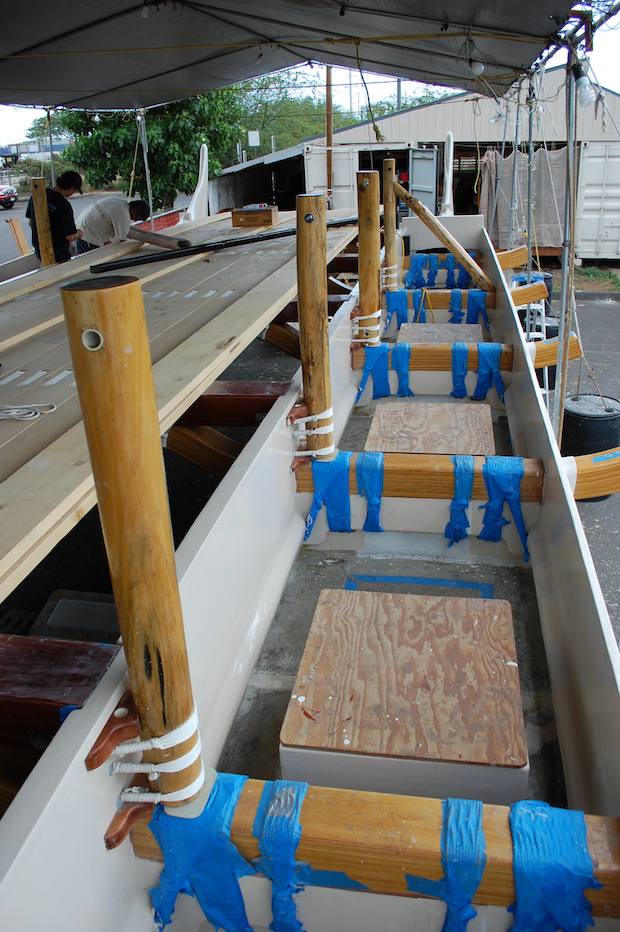
March 2012
After 18 months in dry dock, Hōkūle‘a was completely rebuilt and ready to be re-launched on Thursday, March 8 at daybreak. The date was the 37th anniversary of Hōkūle‘a’s original launching, on March 8, 1975.
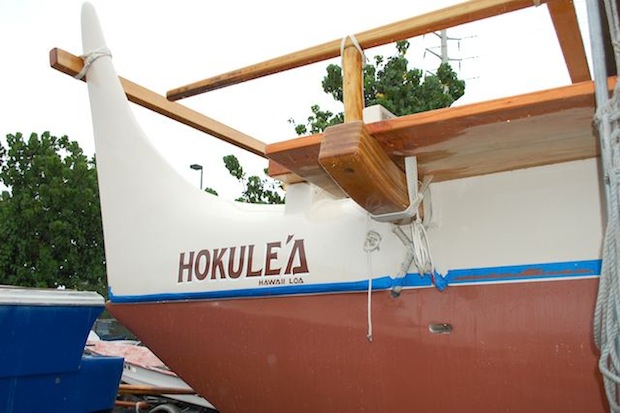
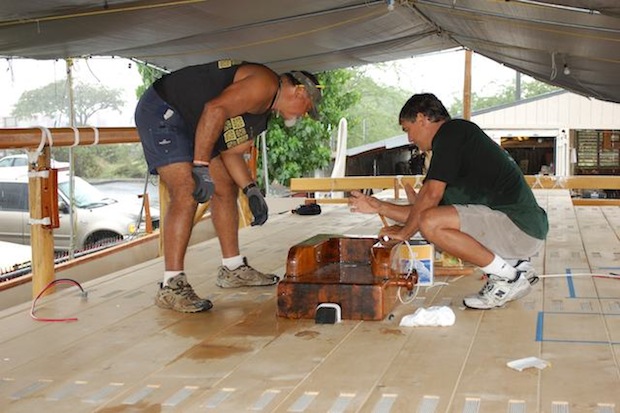
Attwood Makanani and Bruce Blankenfeld plan lashing the back mast step.
“For more than 30 years we’ve had the privilege and honor to explore and discover aboard Hōkūle‘a,” said Bruce Blankenfeld, one of Hōkūle‘a’s master navigators and the person who led the reconstruction effort. “The wa’a has served us well, sailing more than 125,000 miles over the last three decades.... As we train a new generation of leadership and deep sea sailors, it is our obligation to leave them with a canoe that is healthy, sound and capable of another 4 decades of voyaging and exploration.”
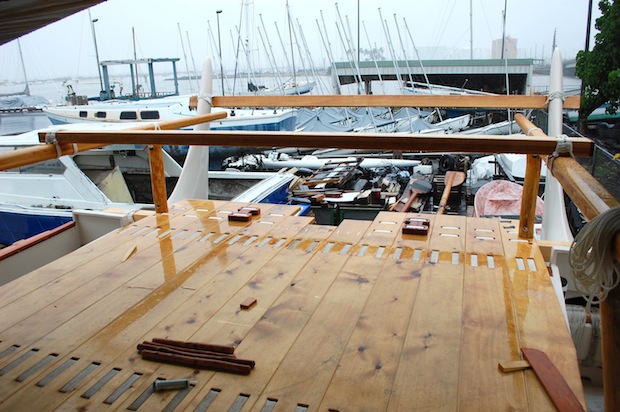
Back end, where the steering blade will be affixed
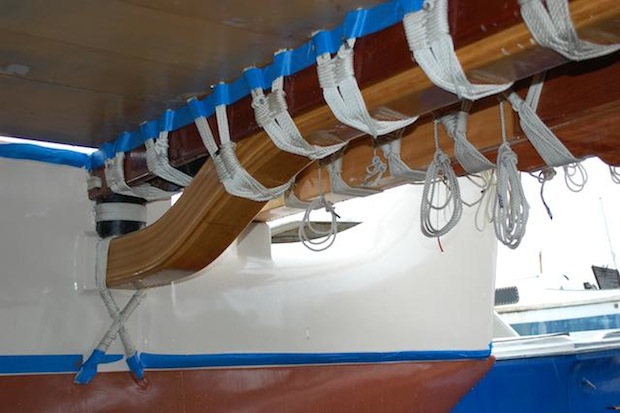
Back end, below deck
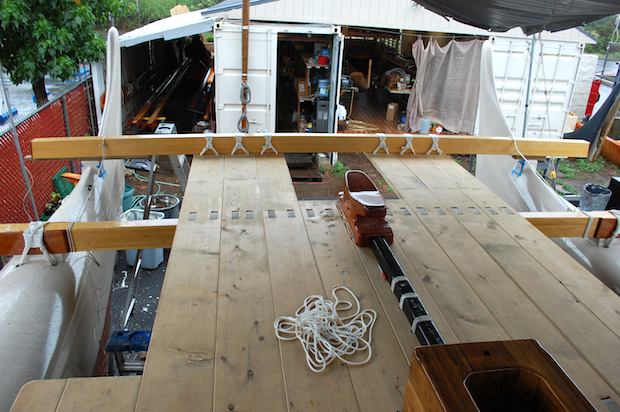
Front end, with mast step and deck cleat.
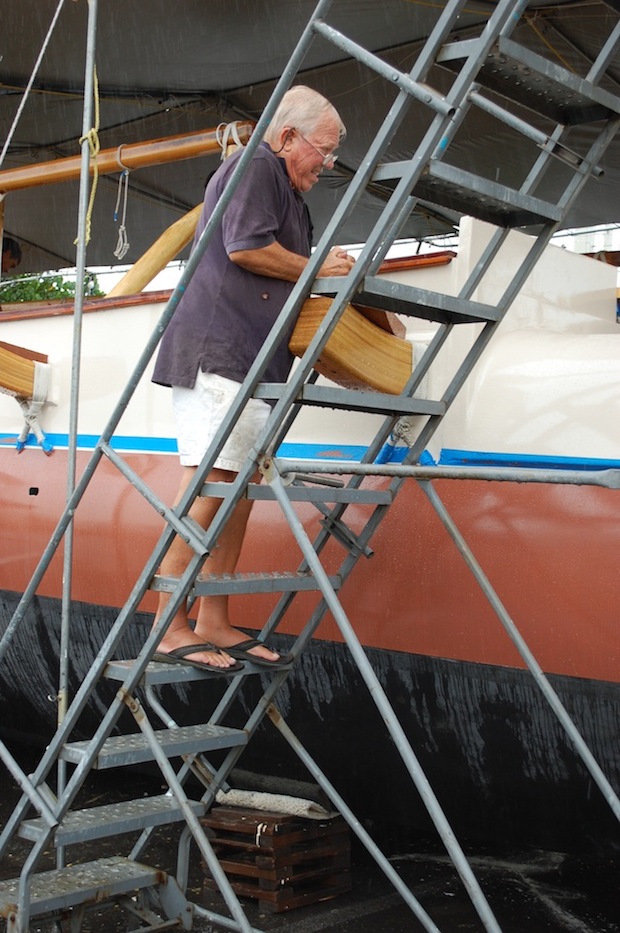
Finishing touches.
